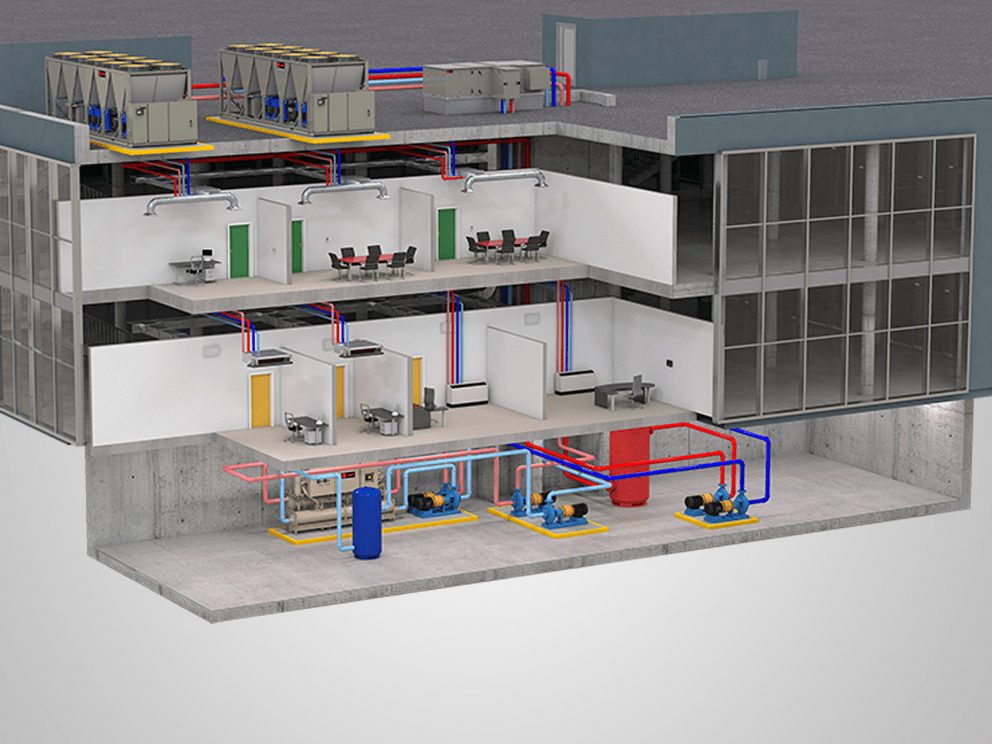In the past year we have faced many challenges, not the least of which has been a global health crisis which continues to take its toll on our communities. The pandemic has raised awareness of the general indoor air quality (IAQ) topic, including not only aspects related to pathogens like the SARS-CoV-2 virus, but also aspects related to other contaminants (dust, allergens, volatile organic compounds, etc.). People were already spending almost 95% of their time in enclosed spaces[1], and this percentage became even higher with the pandemic, so IAQ and the technologies that can preserve or improve it have taken center stage. In fact, the awareness has extended to the broader indoor environmental quality subject, of which IAQ is one element.
We expect the pandemic to have a lasting impact on IAQ and associated technologies and products, just as 9/11 changed air travel security forever. There is already a vast number of IAQ products in the market; the products span a wide range of technologies, have a wide range of properties, and deliver a wide range of performance. Each vendor reports its own performance results, usually derived from tests conducted under the vendor’s assumptions and chosen conditions. Furthermore, there are multiple performance criteria and different products may exhibit different relative performance with respect to different criteria, leading to trade-offs.
For example, product X may outperform product Y with respect to criterion A, while product Y may outperform product X with respect to criterion B. The inability to visualize the effects of these technologies further complicates the task of performing individual or comparative evaluations: if a pathogen is visible only with a microscope, how do you know if a technology inactivates that pathogen and, if so, how fast? How do you know which of two technologies will be more effective under a particular set of conditions?
The factors mentioned above have led to significant confusion in the market: customers do not know what to believe, whom to trust, or which technology to select. Trane® has recognized the need for comparative evaluation of IAQ technologies and has recently conducted lab testing of various technologies to empower field personnel to have a facts-based discussion with customers, enabling them to make an informed decision about which technology (or technologies) to deploy.
We tested a broad range of technologies including filters, UL 867 bipolar ionization (BPI), dry hydrogen peroxide (DHP), photocatalytic oxidation (PCO) – both regular and graphene-enhanced, and ultraviolet germicidal irradiation (UVGI). We tested both in-duct and in-room devices. For each technology, we tested products from reputable vendors, but there is no assurance that the products are representative of their respective technology categories or offer best in class performance, so our results may not generalize to the entire technology category.
The tests were performed by an independent lab (LMS Technologies) in a 1,007 cubic foot chamber, which is one of the largest of its kind. Still, the chamber is much smaller than real spaces, so the devices tested were probably oversized for the chamber. The testing conditions were varied to simulate different deployment scenarios. For example, the simulated HVAC airflow was varied to correspond to different air changes per hour. It is impossible to simulate every possible situation that may be encountered in real deployments; however, all technologies were evaluated under the same conditions, which allows for meaningful comparisons.
The technologies were tested against multiple types of contaminants. We used contaminants that represented multiple categories, including viruses, bacteria, volatile organic compounds (VOCs) and particulates. We tested for reduction of pathogens both in the air and on surfaces. We monitored the potential generation of common byproducts. However, it is not practical to test against a long list of contaminants, let alone an exhaustive one; we recognize this limitation.
Here are our main conclusions:
- All of the products tested exhibited some level of efficacy against some contaminants under certain conditions.
- There is no silver bullet for IAQ: there was not a single dominant product whose performance surpassed that of all other products under all testing conditions.
- The situation above is further complicated by the fact that the selection of an IAQ solution will typically involve criteria beyond performance: cost (first cost and total cost of ownership), maintenance effort, energy consumption, availability / procurement lead time, suitability for new installations or retrofits, etc.
- It is very likely that the selection of an IAQ solution will depend on the criteria that are important for the particular application and on the relative weights assigned to those criteria.
- To meet the performance requirements of certain scenarios it may be necessary to deploy a layered approach that involves more than one technology.
Does the lack of a succinct, definitive answer imply that the testing was a futile exercise? Quite the opposite! We gained invaluable insights about the technologies, their relative strengths, the factors that affect performance, the various contaminants, the proper metrics, etc. IAQ is inherently complex, and we cannot magically remove this complexity.
Trane is a trusted advisor who can understand a customer’s particular needs and recommend the right solution from a broad portfolio of products rather than promote a single product.
If you’d like to learn more about our customized assessment services, please contact us today or browse our Air Cleaning Technologies Testing page for more information.
[1]See https://www.bls.gov/news.release/pdf/atus.pdf, https://www.nature.com/articles/7500165, https://snowbrains.com/brain-post-much-time-average-american-spend-outdoors/, https://www2.deloitte.com/us/en/insights/economy/issues-by-the-numbers/decoding-american-time-use.html, and https://ww2.arb.ca.gov/sites/default/files/2020-05/board-presentation-03-17-05.pdf.

































































































